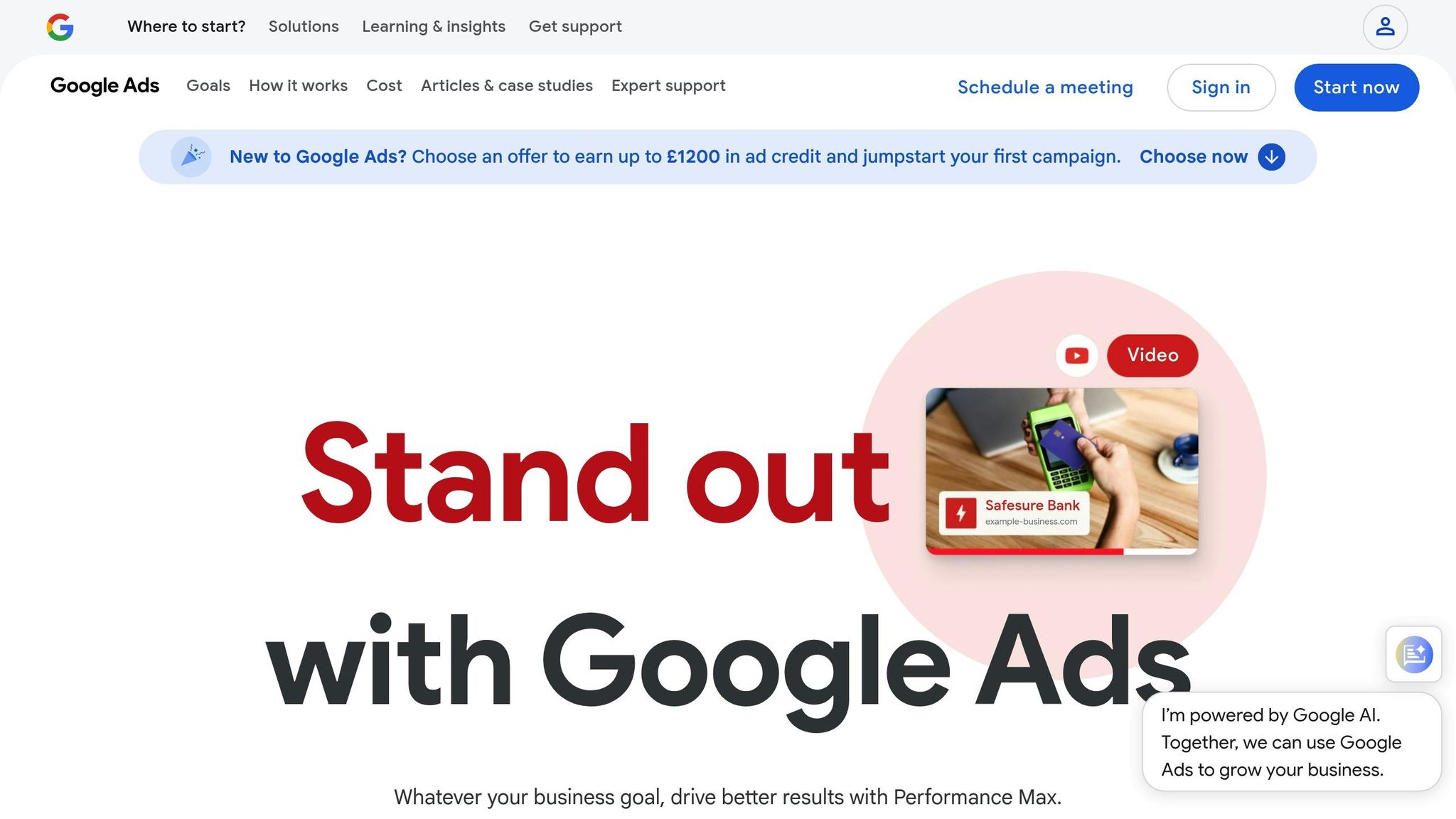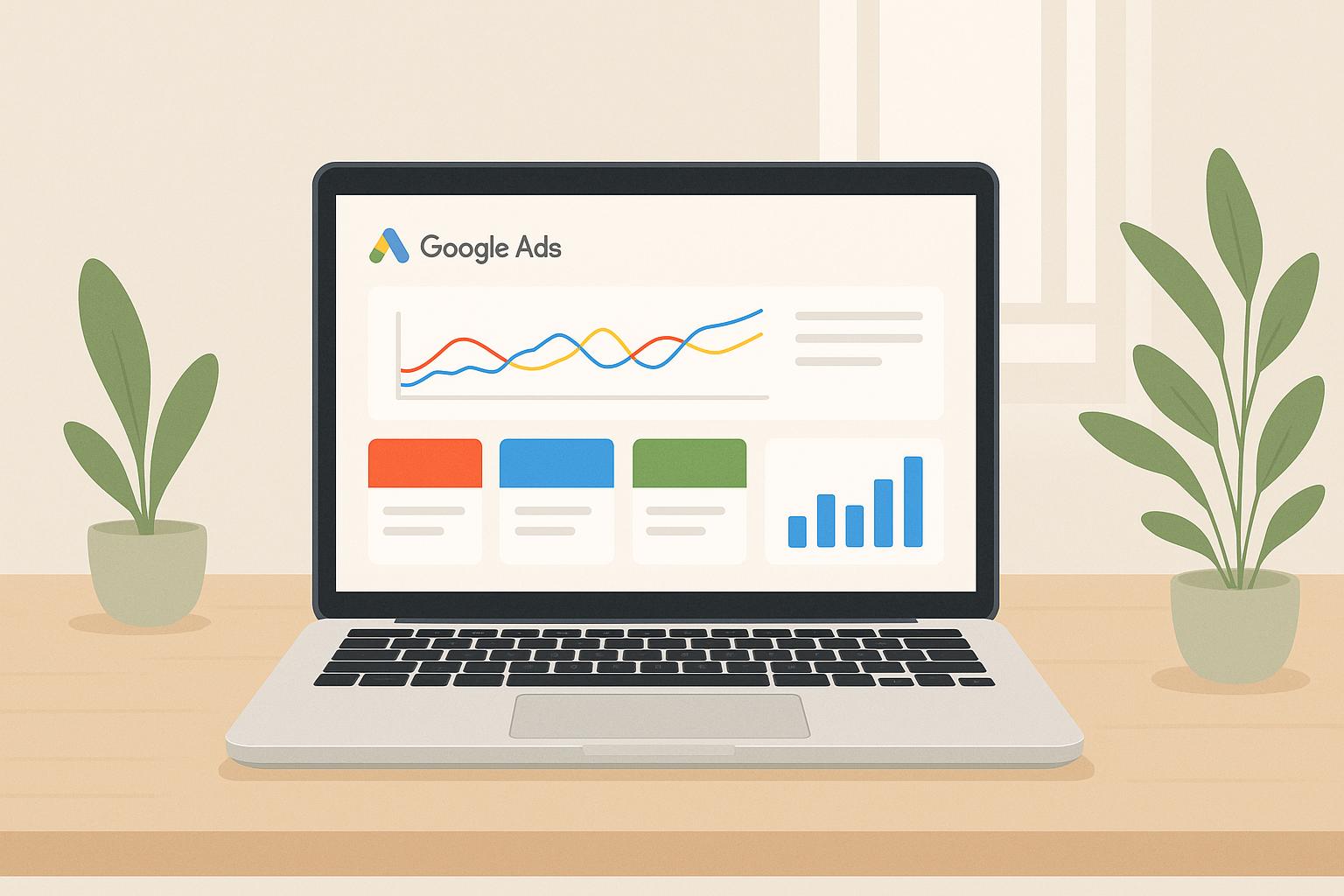Complete Google Ads Guide 2025: From Account to Conversions
Online advertising plays a pivotal role in the growth of modern businesses. For UK entrepreneurs, marketing managers, and business owners looking to optimise their advertising strategies, Google Ads remains one of the most powerful tools in 2025. Yet, navigating its complexities to achieve measurable outcomes can be daunting. This article breaks down essential strategies and insights from a detailed video tutorial, offering a roadmap to mastering Google Ads with efficiency and effectiveness.
Introduction: Why Google Ads Matters

Google Ads dominates the digital advertising landscape. With its massive reach and ability to target highly relevant audiences, it’s a platform that can deliver excellent ROI if used correctly. Businesses, however, often face challenges like managing high costs, targeting the right audience, and understanding its tools and features. This guide provides a step-by-step framework to help UK professionals create, run, and optimise Google Ads campaigns for maximum impact.
Understanding Google Ads: Basics and Benefits
At its core, Google Ads enables businesses to showcase their products and services across Google’s vast network, including the search engine, partner sites, YouTube, Gmail, and more. Here’s why Google Ads should be part of your marketing strategy:
- Massive Reach: Google commands over 90% of global internet users, making it an exceptional platform to attract a diverse audience.
- ROI Potential: On average, businesses earn £2 for every £1 spent on Google Ads. Properly optimised campaigns can generate a 200% ROI.
- Audience Insights: Google leverages user data (search history, locations, preferences) to help advertisers target specific demographics effectively.
- Flexibility in Budgets: Google Ads accommodates varying budget levels, making it feasible for small businesses and large corporations alike.
Key Campaign Types in Google Ads
Google Ads offers several campaign types to suit different business goals:
- Search Campaigns: Display text ads on Google search results based on keywords. Ideal for capturing high-intent users actively searching for products or services.
- Performance Max Campaigns: A newer, AI-driven campaign type enabling businesses to reach audiences across all Google networks automatically.
- Display Campaigns: Use banner ads on partner websites and YouTube to boost brand visibility.
- Shopping Campaigns: Tailored for eCommerce businesses, these campaigns display product information to shoppers directly.
- Video Campaigns: Focused on YouTube, this format helps engage audiences with promotional or educational video ads.
By selecting the right campaign type, businesses can align their advertising efforts with their specific objectives, whether it’s driving sales, increasing brand awareness, or generating leads.
Step-by-Step Framework for Google Ads Success
1. Setting Clear Campaign Goals
Before diving into ad creation, define the purpose of your campaign. Google Ads offers seven primary campaign objectives:
- Sales: For driving online, offline, or app-based purchases.
- Leads: To collect customer information and generate inquiries for services.
- Website Traffic: Best for increasing visits to your website or landing page.
- App Promotion: For businesses promoting mobile apps to boost downloads.
- Brand Awareness: Ideal for broadening your audience and increasing recognition.
- Local Store Visits: Encourage foot traffic to physical locations.
- Custom Campaign: Build campaigns without predefined objectives for more control.
Pro Tip: Choose an objective that directly supports your business goals. For example, a local café might focus on "Local Store Visits", while an eCommerce store may prioritise "Sales."
2. Creating a Google Ads Account
Creating an account is straightforward but requires attention to detail. From entering your billing information to selecting the correct time zones and currencies, every step impacts how you manage your campaigns.
Tips for Account Setup:
- Use the Correct Currency and Time Zone: If your target market is in the UK, set GBP as your currency and UK time zones.
- Set Up Conversion Tracking: This enables you to track valuable actions such as purchases, sign-ups, or downloads.
- Link Properties: Connect Google Ads with Google Analytics, YouTube, or your eCommerce platform (e.g., Shopify) for enhanced tracking and insights.
3. Crafting Targeted Campaigns
Google Ads excels at bringing precision to advertising. Start by identifying your target audience’s demographics, behaviours, and preferences. Use Google’s advanced targeting options effectively:
- Location Targeting: Focus your campaigns on specific cities, regions, or countries. For UK businesses, you might target London, Manchester, or Birmingham based on audience relevance.
- Demographics: Specify key traits like age, gender, household income, and more. For instance, a luxury brand may target high-income groups aged 25–45.
- Custom Audiences: Create audiences based on user search behaviour, such as "people searching for luxury furniture."
Pro Tip: Use tools like Google’s Keyword Planner to discover high-traffic, low-competition keywords relevant to your industry.
4. Optimising Keyword Match Types
Keywords are the backbone of Google Ads. Selecting the right match type influences the relevance and reach of your ads:
- Broad Match: Reaches the widest audience but may trigger irrelevant searches. Ideal for awareness campaigns.
- Phrase Match: Targets searches containing your keyword phrase, offering a balance between reach and specificity.
- Exact Match: Shows ads only for exact keyword searches, ensuring the highest relevance but with limited reach.
Pro Tip: For UK campaigns, consider incorporating localised keywords, e.g., "affordable furniture in Manchester" or "best coffee shops in London."
5. Creating High-Impact Ads
Your ads should immediately capture attention and prompt action. Focus on compelling headlines, engaging visuals, and clear call-to-action (CTA) buttons:
Example for a Furniture Campaign:
- Headline: "Upgrade Your Home with Elegant Furniture – Shop Now!"
- Description: "Discover modern, high-quality furniture at unbeatable prices. Free UK delivery on orders over £50!"
- CTA: "Shop Now."
Pro Tip: Use A/B testing to experiment with different headlines, visuals, and CTAs to identify the most effective combinations.
6. Monitoring and Analytics
Once your campaign is live, continual monitoring ensures it performs according to expectations. Use Google Ads’ built-in analytics tools to track essential metrics:
- Click-Through Rate (CTR): Indicates ad engagement.
- Conversion Rate: Measures how effectively your ads drive actions like purchases or sign-ups.
- Cost Per Conversion (CPC): Helps track budget efficiency.
Make data-informed adjustments to optimise your campaigns further.
7. Budgeting Smartly
For UK businesses, budgeting can vary depending on campaign goals and competition. A typical starting point might be £10–£50 per day. However, high-value campaigns often require higher spending.
Pro Tip: Monitor ROI closely. Scale up budgets for high-performing campaigns while pausing underperforming ads.
Key Takeaways
- Set Clear Goals: Ensure your campaign aligns with business objectives, such as increasing sales or generating brand awareness.
- Leverage Keyword Match Types: Use broad, phrase, or exact matches strategically to target audiences effectively.
- Invest in Conversion Tracking: It’s essential to measure success by tracking actions like purchases or sign-ups.
- Optimise for Local Audiences: For UK campaigns, focus on location and demographics to reach relevant customers.
- Use Engaging Content: Strong headlines, descriptions, and visuals increase click-through rates and conversions.
- Analyse Campaign Performance: Regularly review metrics such as CTR, CPC, and ROI to fine-tune your campaigns.
- Experiment with Budgets: Start small but scale based on performance to maximise returns while minimising costs.
Conclusion
Google Ads in 2025 presents a transformative opportunity for UK businesses to drive growth, enhance digital presence, and achieve tangible returns on investment. By mastering its tools, setting clear objectives, and optimising campaigns, you can unlock its immense potential. Whether you’re new to the platform or looking to refine your strategies, the steps outlined in this guide will set you on a path to success.
Start small, test often, and let data-driven decisions shape your journey to Google Ads mastery. Make every pound count!
Source: "FREE Google Ads Full Course (2025) 🔥 | Beginner to Expert Guide" – Meet Usama, YouTube, Aug 25, 2025 – https://www.youtube.com/watch?v=C1QH46TOgbw
Use: Embedded for reference. Brief quotes used for commentary/review.


